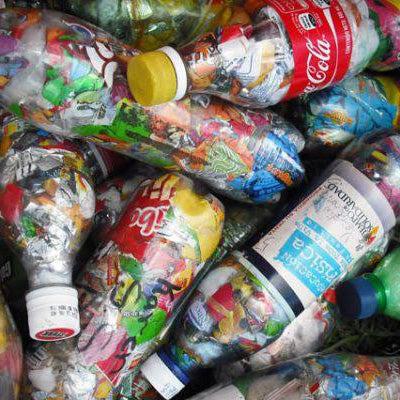The fight for the planet is heating up (pun intended). Many of us watch the videos of our beloved Greta, scoff at Donald Trump, and share #savetheamazon. While it is necessary to spread awareness, the time has come to do more. The problem is: it is not particularly easy to do more. The solutions we see in the news and on social media either require us to live in a solar powered shipping container in a forest in Finland, or call for the complete dismantling of whole industries. Most of us are not in a position to do either, and are left wondering what we can do to help. We at Sealand have been asking the same question and decided to put together a list of five things you can do to reduce your carbon footprint.
- Become an activist
There actually is a way that you can help dismantle climate changing industries – become an activist. Many of us are fortunate to live in democratic societies where those with the power to implement change answer to us. Make it clear to policy makers that climate change is top of the agenda, and that those who are not taking radical action to curb it will not have your vote. The more the issue is pushed, the more likely politicians are to take it seriously. The same is true to massive corporations who answer to customers. Many of these companies are already feeling the pressure and implementing change, and it is important to join and support a myriad of activist groups who continue to hold them to account.

Photo Cred: Markus Spiske / Unsplash
- Travel well, travel less
Not all travel was created equal. By now we know that flying is one the worst single things an individual can do for the environment. Reasearch from The Guardian has found that one long-haul flight can produce more carbon emissions than the average citizen produces a year in a number of countries. According to research from the German nonprofit Atmosfair, flying from London to New York and back generates about 986kg of CO2 per passenger. There are 56 countries where the average person emits less carbon dioxide in a whole year than that single flight – from the Senegal in Africa to Paraguay in South America. While air travel is by far the worst mode of transport for the environment other modes such as train, cars, and boats are often not far behind. The answer? Give the growing trend of ‘Staycations’ a try. Take a vacation by experiencing aspects of your home city that you do not ordinarily have time to.

Photo Cred: threedil / Unsplash
- Reduce your meat consumption
While this remains a contentious issue on a number of fronts, most research has shown that meat industry is one of the worst perpetrators of CO2 production. An Oxford University study estimated that there would be a 49 percent reduction in greenhouse gas emissions from food production if every person in the world went vegan. If your meat consumption is about average, it is estimated that you could cut your personal carbon footprint by about 20% by switching to a vegan diet. In addition to the production of CO2 emissions, meat production uses an excessive amount of water and, when compared to growing plants, is a frighteningly inefficient use of farmable land. We understand that becoming vegan is a big move, and one that many (including us) are not yet ready to make. An alternative that is gaining traction is to become a ‘flexitarian’ – someone who is not a strict vegan, but actively avoids consuming animal products when possible.
- Don’t buy fast fashion, or don’t buy at all
Fast fashion – personified by Cotton On’s ‘buy 3 t-shirts for the price of 1’ – is terrible for the planet. The endless cycle of must-have trends at exceedingly low prices encourage a throw away culture which creates approximately one million tonnes of waste per year – most of which is incinerated or ends up in landfill. In addition to the mass waste created by the industry, the endless production of new garments emits CO2 emissions while consuming unthinkable amounts of fresh water. The garments are then of such a low quality that washing them releases micro-plastics into the ocean. It has been estimated that 35% of micro-plastics in the ocean are from clothing. While the focus of this article is on environmental impact, the treatment of factory workers has consistently been a problem within the industry. The way forward for individual people is to focus on buying less of a higher quality. Take full responsibility of your garments by understanding where they have come from, the environmental impact, and how long they will last. Buy what you need, not what you want.

Photo Cred: Artem Beliaikin / Unsplash
- Eat local
Once again, we see that what you put into your mouth matters. The closer your food is grown to where you buy, the less impact there is on the environment. The shorter the journey food takes to get to you, the less CO2 emissions produced through transport. In addition to reducing your carbon footprint, buying from your backyard supports local economies and, in many cases, comes from small-scale farms who adopt beneficial soil-care practices.
The enormity of climate change can make us feel like small individual actions will make no difference. This, however, is not true – to prove it you can calculate your carbon footprint here. What we do counts, and we need to do more than cheer on the sidelines while others try to save the planet. It is possible, and necessary, to play a part in the solution without radically changing our lives, and the above 5 steps are a good place to start.




